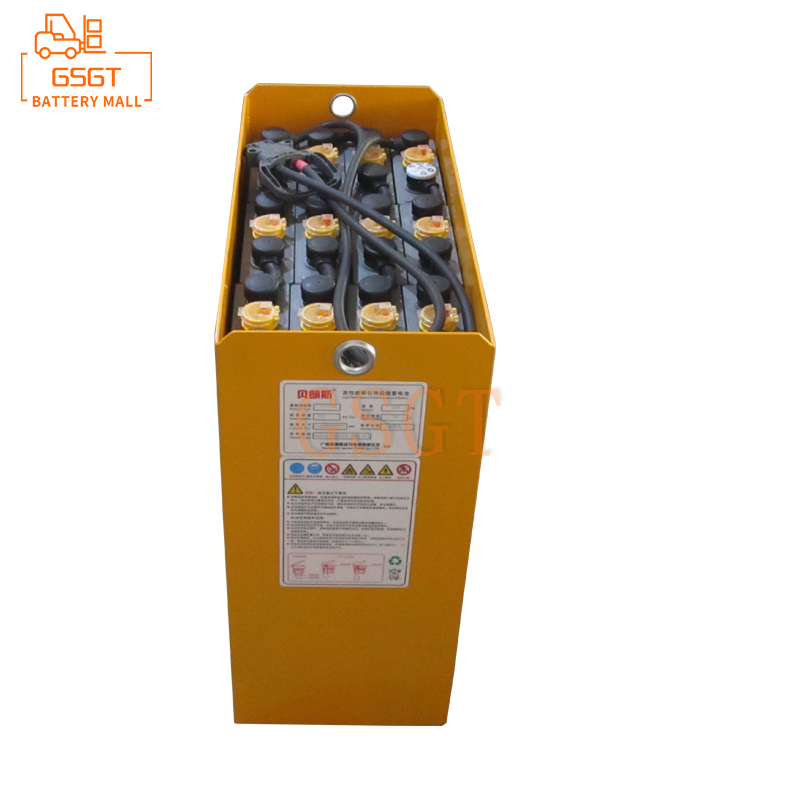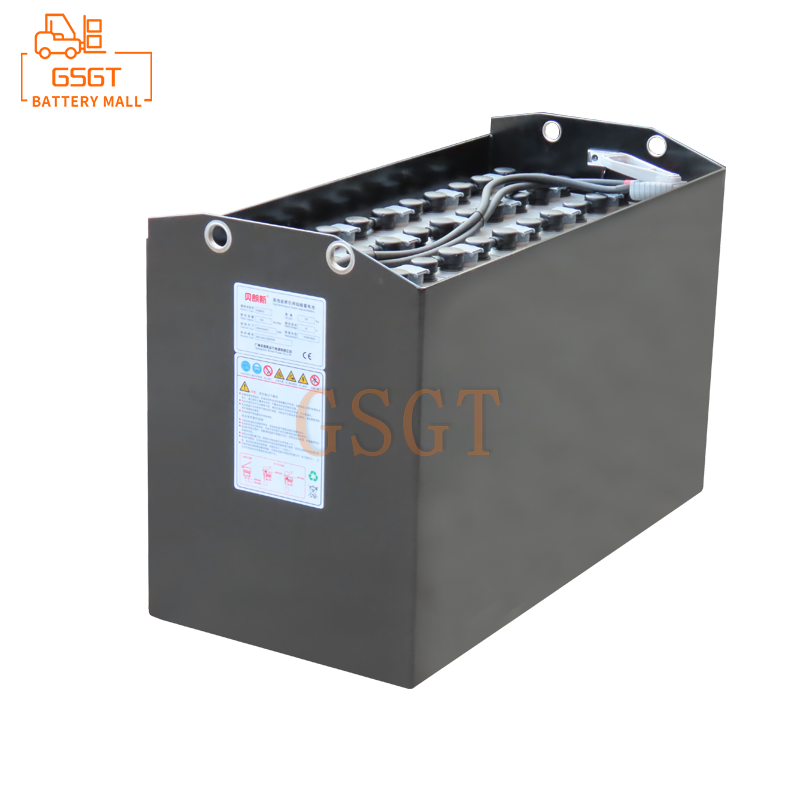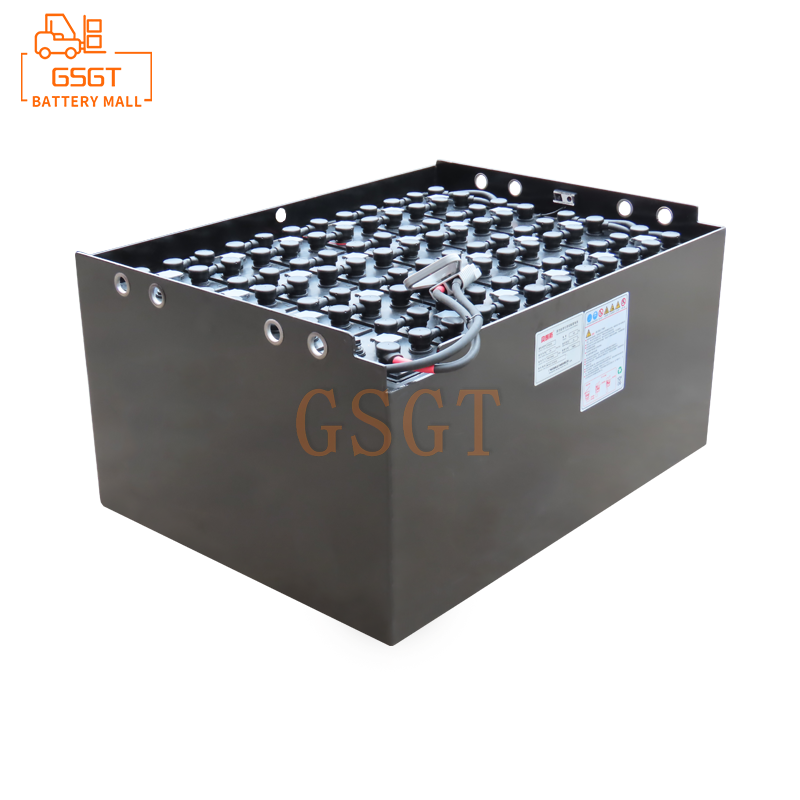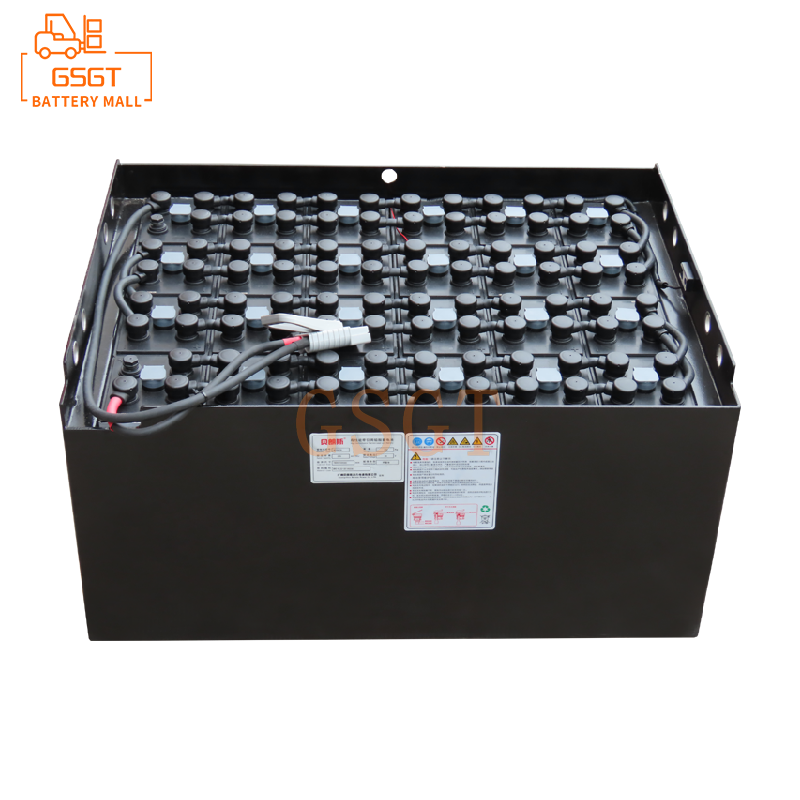Time:2025-06-13 10:28:26
Browse:607
Common types of internal faults and diagnostic methods
Plate vulcanization
Fault manifestation: White hard lead sulfate crystals form on the plates and are difficult to convert into active substances during charging. The voltage rises rapidly during charging. The initial and final voltages are too high, and the final charging voltage can reach about 2.90V per cell. During discharge, the voltage drops rapidly and prematurely reaches the terminal voltage, resulting in a significant reduction in capacity. When charging, the temperature of the electrolyte rises rapidly and is prone to exceed the normal range. The density of the electrolyte is lower than the normal value and bubbles appear prematurely. Disassembling the battery reveals abnormal color and condition of the plates. The positive plate is light brown (normally dark brown) with white lead sulfate spots, while the negative plate is grayish white (normally gray), with a rough surface that has a sandy texture and is hard. In severe cases, the white lead sulfate crystals are large and cannot be restored to active substances.
Diagnostic method: It can be initially judged by measuring the voltage during the charging and discharging processes and observing the changes in the temperature and density of the electrolyte. If the voltage rises rapidly at the beginning of charging and drops sharply during discharging, along with an abnormal increase in the temperature and density of the electrolyte, it is highly likely that the plates are sulfated. The internal resistance of the battery can be detected by a professional internal resistance tester. If the internal resistance increases significantly, it also supports the diagnosis of plate sulfation.
Internal short circuit
Fault manifestation: The open-circuit voltage is low, and the closed-circuit voltage (discharge) quickly reaches the terminal voltage. When a large current is discharged, the terminal voltage drops rapidly to zero. When the circuit is open, the density of the electrolyte is very low, and the electrolyte may freeze in a low-temperature environment. During charging, the voltage rises very slowly and remains at a low level (sometimes dropping to zero), the temperature of the electrolyte rises very and rapidly, the density rises very slowly or almost unchanged, and no bubbles or gas appear very late.
Diagnostic method: Measure the open-circuit voltage of the battery. If it is significantly lower than the normal level, there may be an internal short circuit. Measure the voltage of each individual cell in the battery pack with a multimeter. If the voltage of a certain cell is abnormally low, it may be that there is an internal short circuit in that cell. The appearance of the electrolyte can also be inspected. If the electrolyte is turbid and contains impurities, it may be due to the shedding of the active material on the plates, causing a short circuit.
Plate bending and corrosion fracture
Fault manifestation: Plate bending mostly occurs on the positive plate, while the bending of the negative plate may be caused by excessive bending of the positive plate. Plate fractures are mostly caused by grid corrosion and reduced strength, especially the positive grid is more severe. The electrolyte of the faulty battery is turbid, the plates are in a rotten state, and the active material on the positive plate falls off due to the corrosion of the grid, losing strength and coagulability, in a granular form. The amount of effective material decreases, and the battery capacity drops.
Diagnostic method: Open the battery casing and visually inspect whether the plates are bent or broken. Observe whether the electrolyte is turbid. If it is turbid and there are blocky substances suspended, it may be that the active substances on the plates have fallen off. Measure the battery capacity. If the capacity drops significantly and other fault factors are ruled out, it is necessary to check whether the plates are corroded or broken.
The electrolyte has dried up or deteriorated
Fault manifestations: The drying up of the electrolyte causes the internal chemical reactions of the battery to fail to proceed normally, resulting in a decrease in battery capacity, severe heat generation during charging, and even potential battery damage. The deterioration of the electrolyte may be due to the mixture of impurities, which can increase the battery's self-discharge, reduce its capacity, and deteriorate its charging and discharging performance.
Diagnostic method: Observe the battery liquid level. If the liquid level is lower than the lowest scale line, it indicates that the electrolyte has dried up. Check the color and odor of the electrolyte. A normal electrolyte should be colorless and transparent or slightly light yellow, with no obvious odor. If the color is abnormal or there is a pungent smell, it may have deteriorated. Measure the density of the electrolyte with a hydrometer and compare it with the standard value. If the deviation is too large, it indicates that there is a problem with the electrolyte.
Reverse pole failure
Fault manifestation: Reverse polarity refers to the change of the positive and negative terminals of the battery. One situation is that during assembly, the terminal group of a single cell or the entire battery group is connected in reverse. After acid filling, the measured terminal voltage is less than the sum of the rated voltages of each individual battery cell, and even the terminal voltage is negative. Another situation is when multiple batteries are used in series. If a certain battery has a low capacity or completely loses its capacity, it will be recharged by other batteries during discharge. The original negative terminal becomes the positive terminal, and the positive terminal becomes the negative terminal, resulting in a negative terminal voltage.
Diagnostic method: Measure the terminal voltage of the battery. If the terminal voltage is abnormally low or negative, it may be reversed. For a storage battery composed of multiple individual cells, measure the voltage of each individual cell one by one. If the voltage of a certain cell is negative, determine the reverse pole of that cell.
Daily maintenance and preventive measures
Reasonable charging: Use a matching charger and charge according to the specified charging time and current to avoid overcharging and undercharging. After the forklift battery is discharged, it should be charged as soon as possible to prevent the battery from being in a state of low charge for a long time. Regularly carry out equalization charging to eliminate the voltage and capacity differences among individual cells in the battery pack.
Regularly check the electrolyte: Regularly check the electrolyte level, add distilled water in time, and keep the level within the normal range. Regularly measure the density of the electrolyte and adjust it according to the season and usage conditions. Avoid mixing impurities into the electrolyte. When adding distilled water, use pure water sources.
Monitor battery temperature: During charging and discharging, pay attention to monitoring the battery temperature to avoid it being too high. If the battery temperature is found to be abnormally rising, stop using it immediately and check for any internal faults. Ensure that the battery working environment is well-ventilated to reduce the impact of ambient temperature on the battery.
Avoid high current discharge: When starting or accelerating the forklift, avoid sudden high current discharge to reduce damage to the battery plates. Arrange forklift operation tasks reasonably to avoid long-term continuous high-intensity work.
Regular maintenance and care: Regularly conduct visual inspections of forklift batteries to check if the casing is damaged or leaking, and if the terminal posts are corroded, etc. Regularly conduct in-depth inspections of the battery, such as measuring internal resistance and capacity, to promptly identify potential issues.
Summary
The internal fault types of lead-acid batteries in forklifts are diverse. By observing and measuring aspects such as voltage, electrolyte, and plates, a simple diagnosis can be achieved. In daily work, doing a good job in battery maintenance and taking preventive measures such as reasonable charging and regular inspection can effectively reduce the occurrence rate of faults, extend the service life of batteries, ensure the stable and efficient operation of forklifts, and lower the operating costs of enterprises.

$1105

$2450

$5710

$5710

MESSAGE
Professional And Efficient
Security
Affordable Price
Professional Services